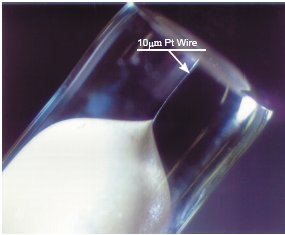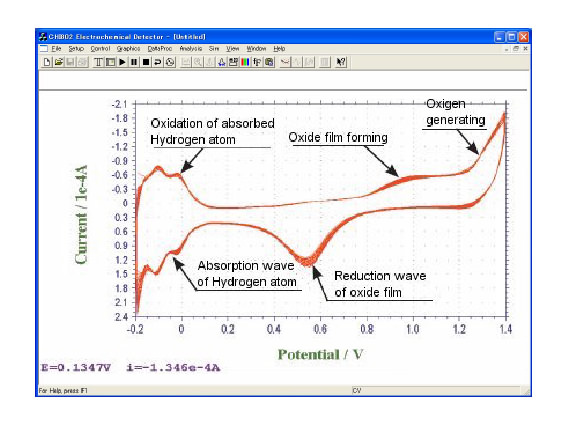Working electrode selection

Choice of working electrode is a vital component for
experiment
Electrical chemical reactions should be observed at a wide potential
range without influence arises from the electrode itself. Beside
that, chemical species' reaction potential have to fall in the
potential window of the electrode.
Pt(Platinum) and Au (Gold) electrodes -
applied to organic or inorganic substances measurement because they
have high over potential for oxygen evolution and low over potential
for hydrogen evolution.
Hg(Mercury) electrode - well suited to
measure reduction reactions because of its high over potential for
hydrogen evolution. Hg electrode also can observe the reduction
reaction of Zn (zinc) specifically in contrast to other electrodes
which would hidden by hydrogen generation.
At the measurement with non-aqueous solvent,
hydrogen/oxygen over potential does not affect. Instead of that,
decomposition potential of the non-aqueous solvent and support
electrolyte comes to an imporatnt factor. Furthermore, commingling
of water with the non-aqueous solvent makes the potential window
narrower by the quantity of the water.

Figure above : i-E curbs of the result of 50 times' scanning by immersing a Pt electrode in 0.5M H2SO4 solution. Reiteration of the cycle obviously activates the electrode. Although there is absorption wave at the cathode side, it is possible to observe other electrodes' reaction in this potential range because this reaction requires only certain quantity of electricity.